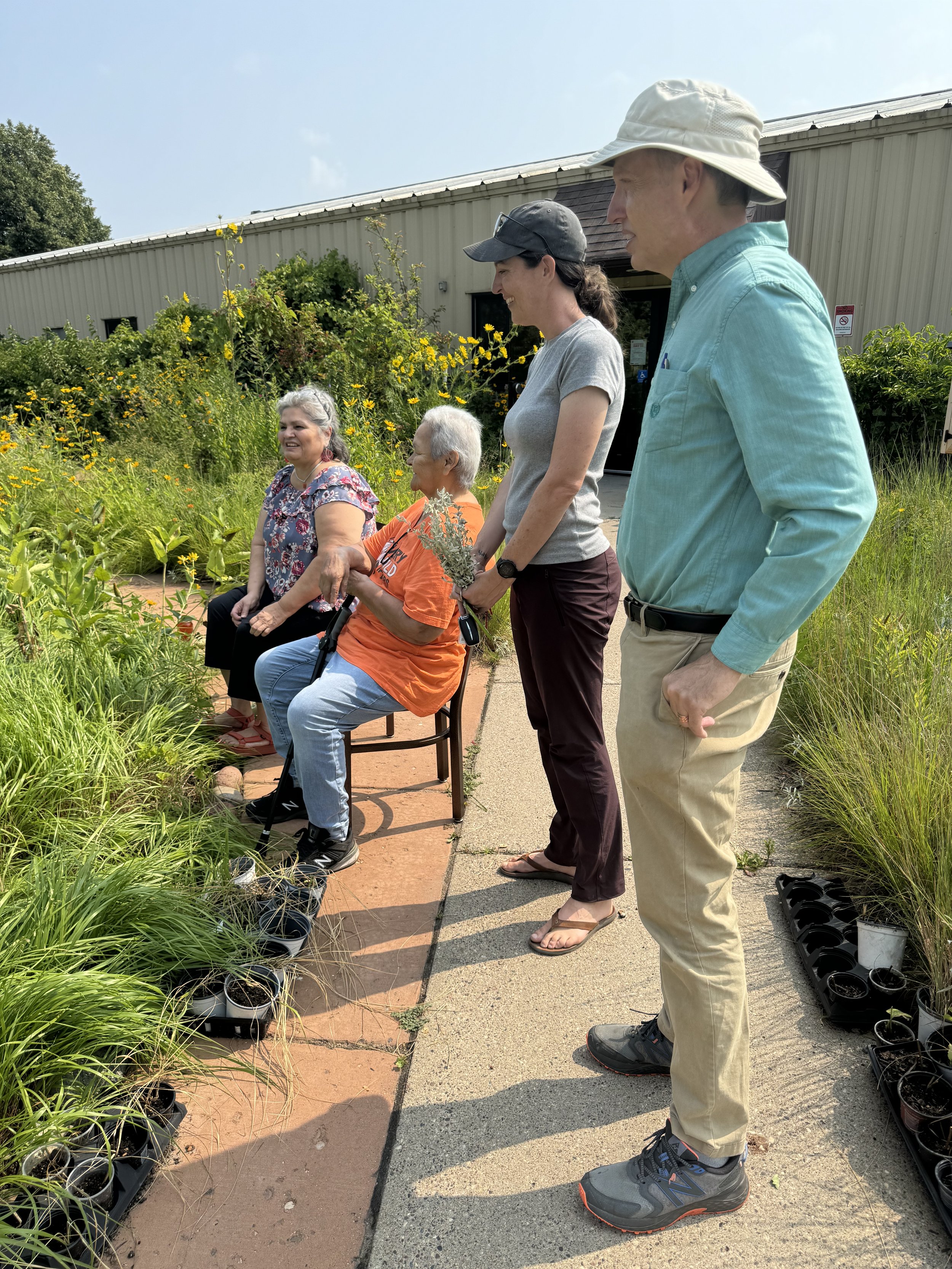The Culture Garden at Prairie Island
The Two-Eyed Seeing group traveled south to Prairie Island Indian Community to see and experience the Cultural Garden at the community center. We are grateful to Nicki Buck for meeting with us in the garden to talk about her work with plants, the garden, and community. Nicki is a leader in Dakota plant knowledge and in the Cultural Garden work.
During our time with Nicki, we learned about two plants key to the Dakota people: sage and sweetgrass. Nicki described how she established sweetgrass at the center of the garden in forms inspired by the spread of an eagle’s wings. She talked about how the sweetgrass and sage display characteristics of being introverts and extroverts, respectively. This comes to fruition for both plants in the way they tell you what they need and in an overall sense how they're doing. Sage always clearly lets the person know if it's not happy, unlike sweetgrass that holds that information often to itself. The sweetgrass was lushly growing in full sun with tufted swirling mounds - a sign of happy plants. The sweetgrass truly does smell sweet - like fresh air after a cooling rain shower.
Nicki said that she would teach us how to braid sweetgrass. We were each invited to choose a spot to sit within the sweetgrass bed. Nicki was taught how to braid sweetgrass by elders/teachers from her community. To begin our braiding, she told us to create three bundles of seven strands, each beginning at the base of the plant. These three bundles represent the past generation (our ancestors), the current generation, and the third represents the generations and people to come. Then braid until you get almost to the end of the strands, taking a blade or two of sweetgrass (separated from the braid) to wrap around and tie the newly braided bundle. These braids are then cut at the bottom of the plant. They are then dried and later often burned in someone's home as a way to cleanse and purify the air.
Nicki described to us that she starts her braiding facing east since she is an “eastern woman.” Then she rotates to the other three cardinal directions. The human always goes in a circle to do the braiding. In this way, four bundles are created, and she would then move to a new spot to begin the circular braiding again. This technique ensures both the longevity and health of the plant.
Before and after braiding, Jewell sang a song over the sweetgrass. This song/practice came into discussion as Jewell talked with the group about how many of the planting and harvesting songs of the Dakota people have been lost. She told us about her visit to the Smithsonian Institute in hopes of finding wax recordings of such songs, only to not find any.
Discussion also engaged other plants in the garden. We took a longer look at chokecherries. Nick told us that in the Lakota tradition, these berries are mixed with a source of fat and used to create a jerky-like food that not only is high in protein and minerals, it is portable which makes it easy to take on hunting trips. This mixture could also be rehydrated and used in soups, broths, as well as an addition to many different meals.


